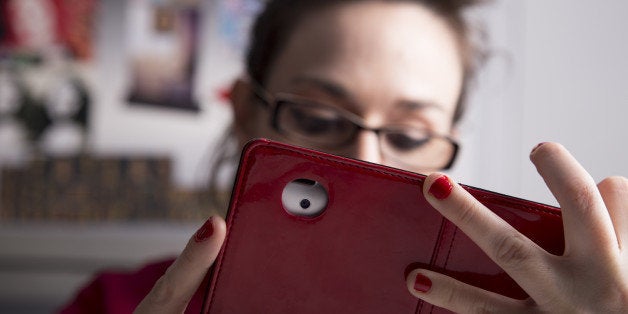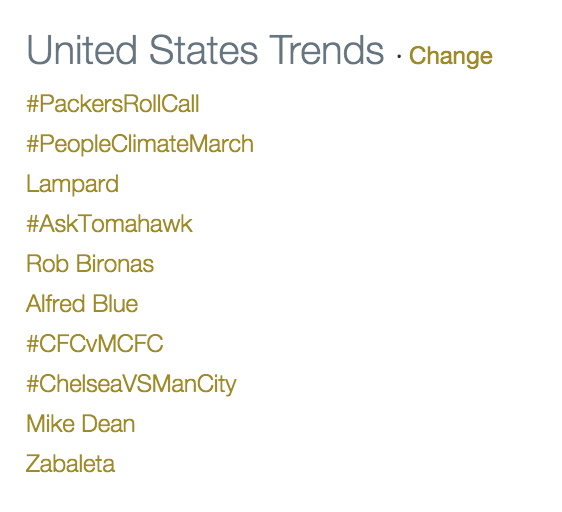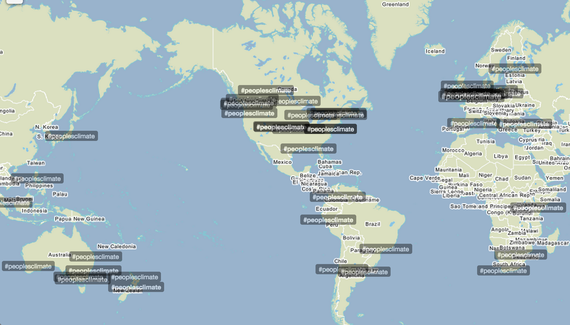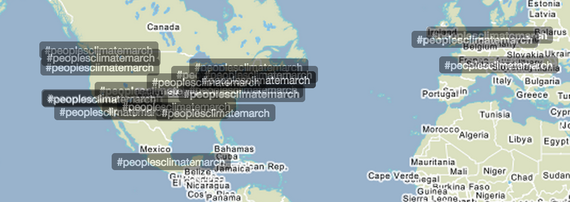
How do you create the number one trending hashtag in the world?
The answer is a little complex: it requires the help of thousands of users who are micro-blogging/talking about the same subject on social media at the same time. It sounds immensely difficult to achieve, but scaled up or down, there are things that you can do to control and shape it.
On September 21, 2014, the world woke up to thousands of marches across the planet under one unifying message: leaders need to take immediate, decisive action on climate change. In New York City, a line of over 310,000 people stretched nearly three miles long. That was one of almost 2,700 events in 156 countries. Despite this unprecedented outpouring, the top trending tweets were about American football, celebrities, and cat videos.
That morning, I lamented this on Twitter a few hours before our own local event was to kick off:
However, I wasn't alone in this thought and many others started tweeting about the People's Climate March, using a string of different hashtags to express it. As the movement went on, and as the media joined in and began tweeting, it started narrowing down to two main hashtags: #peoplesclimatemarch and #peoplesclimate, with one began trending page on Twitter:
Within hours of that, it became trending worldwide. Here's a global view of the hotspots for #peoplesclimate
With #peoplesclimatemarch, it was primarily utilized in the U.S and Europe:
So what kind of lessons can you take from this (besides learning how important the climate crisis is around the world)?
1. It is Important to Promote a Single, Unified Tag
Whether you a hosting a march, a conference, a fundraising gala, or any other event, you need to use a hashtag that is promoted well. People want to be included in the conversation -- that's why hashtags are used to begin with. Coming up with a primary hashtag and promoting it early and often is the key. It should be on all of your printed materials, on your online invites, included in your press release and media advisories, and in highly visible areas. If you are working with a single hashtag (as opposed to a few), it will help reduce fragmented social media posts.
2. Conversations Should Be Corralled and Curated
One of the keys to trending a hashtag is gathering all of "rogue" posts and getting them to use the main topic hashtag. If you are planning to live tweet or host social media conversations about an event, you should be searching multiple conversations/posts about it (Tweetdeck is great for this), then directing users to the main hashtag and/or re-sharing good content. For example, if you have a guest speaker, search for their name on social media -- people might be posting quotes or commentary without using the hashtag. As posts come up, simply retweet and add the hashtag and guide users back to the main conversation. A good practice is also to credit the speaker by tagging their social media handles.
Designate one or more staff to be actively looking and engaging with users throughout an event.
3. Find and Designate Thought Leaders
The success of a trending hashtag does not only depend on the quantity of users, but also the quality of them as well. In other words, users who have high influence on social media (think Klout scores) and a large audience. These users also tend to be very social media savvy as well. If you identify these key users and ask them to participate in advance, you can be assured of a broad reach because their followers are likely to engage with the content. A dozen influential users actively posting simultaneously can easily lead to a trending topic in a medium-sized region.
4. Priming the Pump: Pre-schedule Content
While it sounds counter to the idea of live tweeting, pre-scheduling certain content and keep the hashtag active. If you're running an event, there's a good chance that you'll be running around handling logistics as well -- or at the very least, so busy curating social content that it becomes difficult to actively and continually post new content. You can "prime the pump" by pre-scheduling quality content such as videos, quotes, or links to articles that fit with the event's themes and topics. If you have a speaker, you can link to their books/website. You can also pre-schedule logistics/scheduling information as well. For example, when I'm speaking at a conference, I'll pre-schedule a "countdown" - i.e, "Join me in main events in one hour for my presentation on XYZ #HashtagHere" (then 30 minutes, then 15 minutes, and so on).
5. Encourage Diverse Views
Few things are as boring on social media as a one-sided conversation. World-topping hashtags are usually the result of stimulating conversations that incorporate diverse perspectives. While it can be tempting to shut down anyone who is off-message, a good way to keep things moving forward is to ask questions and respectfully acknowledge and respond to users. If a heated debate erupts, you can usually cool things down by focusing on similar values or disarming them with some humor. If anything, at least it brings more attention to your event!
Live social media posting and bring increased attention to your event/cause. It can alert journalists and media to the importance of your effort, often resulting in press coverage. It also quickly reaches other users who are not in attendance.
After your event, you can use tools like Storify to collect posts from across the Internet into one concentrated blog. Storify also can automatically alert social media users who you quote or use content from -- those users will most likely share your article as well, thus continuing to bring energy and enthusiasm to your event.
Remember, like any other communications effort, live-tweeting involves both strategy and tactics. You should have broad goals and purpose, as well as specific actions to execute the plan. Doing so can exponentially raise the awareness and increase the life of your in-person efforts.




